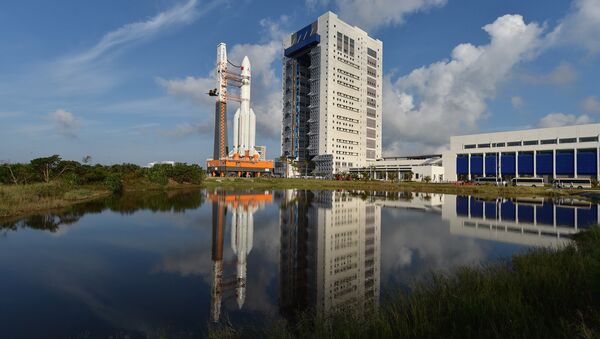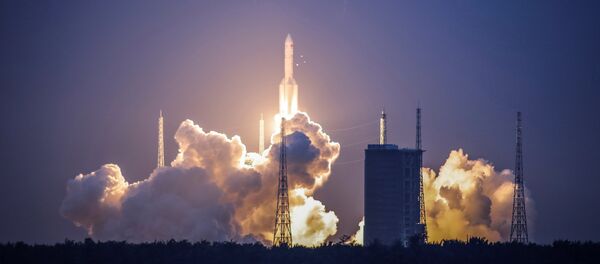Sunday’s launch of the Changzheng 5 (Long March 5) heavy-lift rocket from the Wenchang space center on Hainan Island, already the second since November 2016, brought together an eager crowd of reporters representing the world’s top media outlets.
The incident is under investigation and the authorities have yet to comment on the possible causes of the incident or its possible impact on the program as a whole.
At fifty-seven meters tall and five meters across, the new-generation Long March 5 is China’s post powerful rocket capable of carrying 25 tons of payload into low orbit — more than double the country’s previous lift capability.
One of the biggest fortes of the 879-ton rocket is that it uses environmentally friendly fuel, including kerosene, liquid hydrogen, and liquid oxygen, rather than highly toxic propellants.
Unfazed by Sunday’s setback, China now has its eyes on the November launch of a third Long March 5 rocket with the Chang’e 5 rover to land on the Moon, collect samples of lunar rock and return to Earth.
Xu Yansong, Director for Space Cooperation Division at China’s National Space Administration (CNSA), earlier told Sputnik that the launch of the Chang’e 5 was scheduled for November 30.
Chinese specialists have until then to figure out the causes of Sunday’s failed launch and make sure that such incidents never happen again.
In an interview with Sputnik, Alexander Zheleznyakov, a member of the Tsiolkovsky Academy of Cosmonautics in Moscow, said that Sunday’s incident was unlikely to have any knock-on effect on China’s space exploration program.
"The incident occurred during the second launch [of the LM 5 rocket]. The rocket is still in an experimental stage. We don’t know yet what caused the failure and what needs to be done to fix it,” Zheleznyakov said.
He added that even though Sunday’s incident would have no serious negative impact of China’s space program, the failure could put on ice a number of launches, including of the Chang’e-5 lunar probe.
The Wenchang space launch center has two launch pads: one for the Long March 5 and the other for the Long March 7 rockets. The initial launch of the LM 5 rocket was on November 3, 2016. Forty minutes after liftoff it was announced that the launch was a success.
Because the Wenchang cosmodrome is the most advanced of China’s four spaceports, it was assigned a very special role in the country’s lunar and Mars exploration programs.
In 2020, Chinese scientists plan to use the LM 5 rocket to send a probe to the intermediary orbit between the Earth and Mars to study the Red Planet.
It was earlier reported that by 2025 the Wenchang space launch center will be used as part of a program of manned flights to the Moon.




